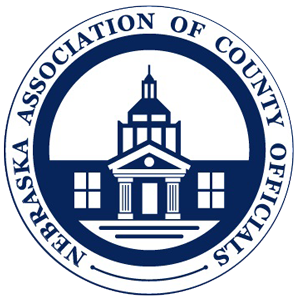USDA Rural Development is the lead federal agency in helping rural communities grow and prosper. RD increases economic development and improves the quality of life in rural communities and small towns. RD does this by partnering with county officials, rural residents, leaders, and organizations to build prosperity and resilience.
Rural Development advocates to help expand economic opportunity, create and save jobs, and improve the quality of life for people living in rural areas. With more than 50 loan and grant programs, this assistance supports housing, infrastructure improvements, business development, community facilities, public safety, healthcare, water and wastewater improvements, and high-speed internet access in rural, tribal, and high-poverty areas.
The USDA Rural Development staff stands ready to assist County Officials. Counties may be the lead application to our Community Facilities and Water and Environmental Program. County Officials are encouraged to learn about other programs, such as our Single-Family Housing and Business Programs as well.
Community Programs
Essential community infrastructure is key to ensuring rural areas enjoy the same quality of life and services enjoyed by those in urban areas. Community Facilities Programs offer several grants, direct loans, and loan guarantees, to develop or improve essential public services and facilities in communities across Nebraska, with populations of 20,000 or less. These facilities help improve the quality of life of residents and increase the competitiveness of rural communities in attracting and retaining businesses.
Public bodies can use RD funds to construct, expand, or improve facilities that provide health care, education, public safety, and public services. Projects may include fire and rescue stations, village and town halls, health care clinics, hospitals, adult and childcare centers, assisted living facilities, rehabilitation centers, public buildings, schools, libraries, and many other community-based initiatives. Financing may also cover the costs for land acquisition, professional fees, and equipment purchases.
The Community Facilities Direct Loan and Grant Program provides affordable funding to develop essential community facilities in rural areas. Grant applicants are graded on a scale of eligibility. Communities with lower median household incomes are eligible for a higher proportion of grant funds, up to 75 percent, toward the total project cost. Project funds can be used for everything from a new fire truck, to replacing a leaking roof on city hall.
Water and Environmental Programs
In addition to essential community facility infrastructure, Rural Development provides funding for the construction of water and waste facilities in rural communities and is the only federal program exclusively focused on water and waste infrastructure needs of rural communities with populations of 10,000 or less. Through the Rural Utilities Service, Water and Environmental Programs, rural communities obtain the technical assistance and financing necessary to provide their residents with safe drinking water and waste disposal systems. WEP also provides funding to organizations that provide technical assistance and training to rural communities in relation to their water and waste activities. Safe drinking water and sanitary waste disposal systems are vital to public health.
The most popular of the WEP programs is the Water and Waste Disposal Loan and Grant Program, which provides funding for clean and reliable drinking water systems, sanitary sewage disposal, sanitary solid waste disposal and storm water drainage to households and businesses in eligible rural areas. Funds may be used for anything from building a new water tower or wastewater treatment plant to rehabilitating a storm water collection infrastructure.
Additional Opportunities
Additional funding opportunities with RD include Single-Family Housing and Business Programs. While counties may not be the lead applicant for these programs, these opportunities are valuable to county partners and stakeholders.
RD offers both direct and guaranteed loans, both with 100 percent financing, which requires no down payment, closing costs and repairs may be included, and income limits apply.
Housing repair grants are available to rural seniors who need assistance repairing, improving, or modernizing their homes, and repair loans are available to homeowners of all ages, who live in qualifying communities and are within the eligible income limits.
Value Added Producer Grants, which help agricultural producers enter into value-added activities related to the processing and marketing of new products. The goals of this program are to generate new products, create and expand marketing opportunities, and increase producer income.
Business and Industry Loan Guarantees, which offer loan guarantees to lenders for their loans to rural businesses.
Energy Programs, which provide funding to complete energy audits, renewable energy development assistance, make energy efficiency improvements, and install renewable energy systems.
Rural Business Development Grants are designed to provide technical assistance and training for small rural businesses having fewer than 50 new workers and less than $1 million in gross revenue
USDA Rural Development also offers numerous other programs that may be of interest to Nebraska Association of County Officials members. For more information on all of RD’s programs, visit Nebraska | Rural Development (usda.gov).
Our staff also stands ready to assist via phone at (402) 437-5551.
USDA is an equal opportunity provider, employer, and lender.
